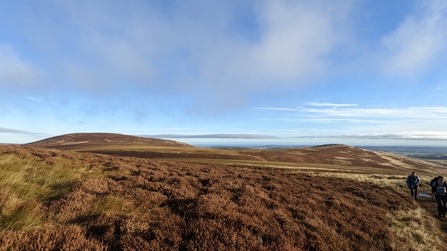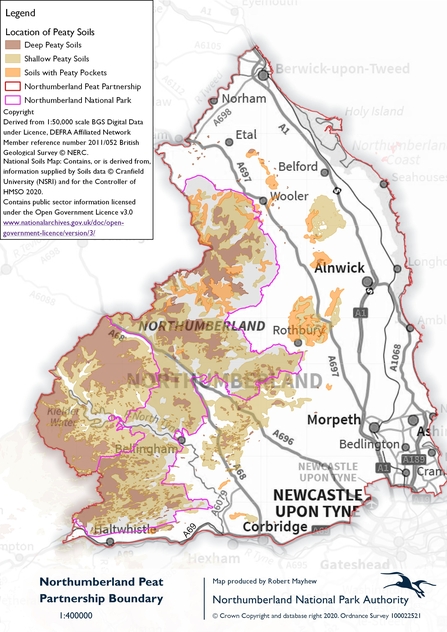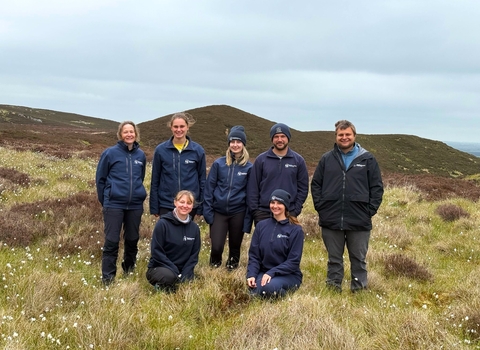
Why peatlands matter
Many of Northumberland’s peatlands have deteriorated due to drainage, burning, peat extraction and afforestation. When healthy, peat bogs lock carbon underground, making them one of our most powerful allies in the fight against climate change. They act like natural sponges, holding water in the landscape, slowing its flow downstream and reducing flood risk. They filter and clean drinking water – a vital service, with around 43% of the UK population relying on peatlands for their water supply- and provide a home for rare and specialist flora and fauna species. They also preserve a rich archaeological record of the past, protecting thousands of years of human history.
When damaged, bogs lose these benefits. Carbon is released back into the atmosphere, turning them from a carbon sink to a carbon source. Water quality and storage capacity decline, driving up the cost of treatment for public supply. The risks of flooding and wildfire increase, and habitats for wildlife are lost. Restoring these landscapes is therefore vital for tackling climate change, securing clean and reliable water, protecting biodiversity and safeguarding cultural and archaeological heritage.
Benefits of peatland restoration
- Long-term carbon storage and climate regulation
- Natural flood management and erosion control
- Cleaner water and reduced treatment costs
- Increased biodiversity and habitats for rare species
- Reduced wildfire risk
- Preserved archaeological records
- Improved landscape quality and opportunities for recreation
- Carbon credit opportunities (e.g. Peatland Code)

Cheviot Summit © Ella Brewes
What is the NPP?
The Northumberland Peat Partnership (NPP) is a collaborative initiative, that brings together a wide range of stakeholders to protect, survey and restore Northumberland’s peatlands. Our mission is to reverse historic damage by returning degraded bogs into healthy, peat-forming condition that benefits both nature and people.
We work across our Partnership Area which spans north of the A69 to the Scottish border, encompassing 142,726 hectares of peatland. Of this, around 23% is classified as deep peat (over 30cm). Our work combines detailed field surveys with desk-based mapping to build a clearer picture of the peatland resource and condition across the region. These insights directly inform restoration plans, helping to target action where it will have the greatest impact. By understanding, protecting and restoring Northumberland’s peatlands, we can keep carbon locked safely underground and play our part in tackling global climate change.

Aims and Objectives
The partnership aims to:
- Promote peatland restoration and sustainable management to support carbon storage, biodiversity, water quality, flood management, fire prevention, archaeology and recreation
- Assess and map the peatland resource across the Partnership Area, evaluating ecological composition, condition and opportunities to enhance connectivity between habitats
- Evaluate carbon and water dynamics within the Partnership Area, measuring carbon content and flow to understand the role of Northumberland’s peatlands in meeting the UK’s net-zero, environmental and climate commitments
- Develop a prioritised programme of restoration, with detailed, costed plans that will guide and secure future investment in peatland recovery
- Secure funding for monitoring projects to build a stronger evidence base on how restoration and management actions influence peatland function and benefits
- Share data, knowledge and best practice across land management and contractor community to support the adoption of sustainable peatland management techniques
- Work in partnership with organisations interested in peatland conservation to exchange knowledge and promote the wide societal value of healthy peatlands
Stay connected
Keep up to date with our latest projects, news and events follow us on:
Or visit:
Contact us
For more information about the Northumberland Peat Partnership please contact:

